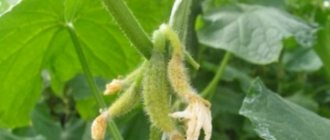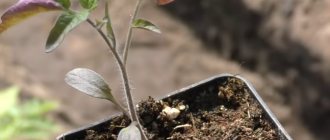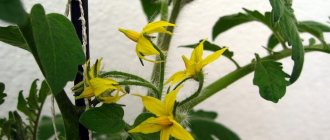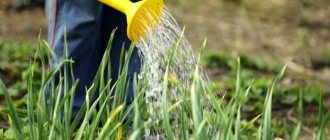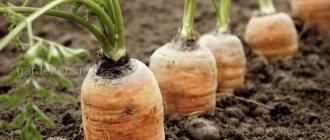Main causes of yellowing
One of the most common mistakes is failure to comply with the conditions that young tomatoes require.
Most often, yellowing of leaves is a consequence of the following factors:
- poor lighting, which is often found in the winter months without the additional use of lamps;
- excessive watering: it leads not only to yellowing, but also to rot;
- soil poor in minerals, insufficient fertilizers;
- unsuitable pH values - soil too acidic for tomatoes;
- there is not enough space after the plant is transplanted.
Also, yellowing of the leaves is caused by some diseases characteristic of these vegetables. All these reasons need to be understood in more detail.
Tomatoes don't get enough light
In order for plants to actively develop, they need good lighting. But tomatoes are sown for seedlings while the daylight hours are still short. Therefore, there will not be enough natural sunlight even for those containers that stand on the windowsill. Tomatoes require at least 8-10 hours of daylight. If it is shorter, then the lower leaves will quickly turn yellow and fall off, because they are in the shadow of the upper foliage. Plants can be saved using a special phytolamp or regular fluorescent and regular lighting.
Improper watering of plants
If you water the tomatoes too rarely, the soil in the pots dries out too much, this will certainly cause yellowing of the young foliage.
But watering should be moderate:
- The optimal frequency is every 5 or 6 days when seedlings appear.
- Then older plants are watered every 4 days.
- When the tomato seedlings have 5 or 6 true leaves, they are watered three times a week.
The reason for yellowing and complete drying of the foliage of young tomatoes may be too dry air due to heating in apartments.
However, it is also worth taking into account the weather factor: on sunny days the soil dries out faster, on cloudy days - slower. To prevent moisture from evaporating so quickly, the surface of the soil between plants can be mulched.
But yellowing of the foliage is also caused by too much water. The roots, constantly being in wet soil, begin to rot. As a result, the plates not only become covered with yellow spots, but also fall off. There is only one way out: adjust the frequency of moistening the substrate.
Temperature conditions
Tomatoes grown for seedlings love warmth. But it should be in moderation. Temperatures of about +30 degrees simply burn young plants. They quickly begin to turn yellow and lose leaves.
This is usually not the most common problem, because in early spring such temperatures do not occur. But if pots with plants are kept too close to the radiator, they will be uncomfortable. To prevent tomato seedlings from dying in this case, they are sprayed with a urea solution. It is prepared at the rate of 1 tbsp. l. substances per 10 liters of water.
Optimal temperature indicators:
- The most favorable temperature for growing during the day is +22…+25 degrees.
- At night, it is better to keep plants at a temperature of +15 degrees.
Low temperatures are also detrimental to young tomatoes. If you keep containers in a room where the air does not warm up above +10, the root system will suffer greatly. The leaves will turn a bluish tint, the tomatoes will wither, and the blades will fall off.
Mineral balance
During the active growing season, tomatoes require a large amount of mineral elements. If the soil is poor in them or, conversely, fertilizers are applied too often and abundantly, this will destroy the seedlings. Tomatoes are very sensitive to the content of phosphorus, potassium and calcium compounds.
Deficiency and excess of minerals:
- Potassium . The lack of this mineral is accompanied by the appearance of a yellowish border along the contour of old leaves. In addition, they begin to noticeably curl upward. Then they gradually dry out and the plant discards them.
- Calcium . This substance has a stronger effect on young leaves located at the top of tomatoes. They turn pale, curl, and the ends dry out. If measures are not taken, they will fall off, and the seedlings themselves will quickly die.
- Phosphorus . An excess of this mineral first provokes the appearance of pale yellowish spots, which gradually fill the entire surface of the leaf. This problem is also called chlorosis. To prevent the seedlings from dying, complex mineral supplements will be required. It is also good to use ash.
- Nitrogen . Another important element for any type of tomato. “Too much” nitrogen in the soil can cause the tomatoes to “burn.” The reason for this is not necessarily too frequent watering with fertilizer solutions. There could be a lot of nitrogen in the soil that was taken from the garden, and it was intensively fertilized with manure.
If there are too many mineral salts in the soil, the soil is saline, then yellow or white spots begin to appear on its surface. In this case, carefully remove the top layer by 2-3 cm with a spoon. Water the crop with softened (rain, melt) water. Feeding is stopped for several weeks.
Important! The reasons why seedlings dry out may be lack of light and dry air.
If yellow areas appear between the veins of the foliage and the seedlings are not growing well, this may indicate that the young plants are lacking magnesium compounds. Light green, pale, only slightly yellowish color of the leaf blades indicates a lack of iron. If there is a deficiency of manganese in the soil, then the foliage begins to turn yellow in a checkerboard pattern, first the color changes at the base of the leaves. Then the plates dry out and fall off.
Lack of light
Often the reason why the lower leaves of tomatoes wither and fall off is poor lighting. Normal growth and development of tomatoes is impossible if they lack sunlight.
To obtain viable seedlings, the gardener must be able to competently regulate the amount of ultraviolet radiation reaching them. Light deficiency develops if sowing work is carried out during a period of low solar activity (in February or March), with a large number of cloudy days. The leaves of seedlings planted too densely also begin to dry out, turn yellow and fall off, as they shade each other.
Signs of sunlight deficiency:
- stretching the stems, bending them towards the light source;
- darkening of the green mass, in which active production of chlorophyll begins;
- a large number of fallen leaves.
For proper development, daylight hours for tomatoes should be at least 10 hours. Containers with seedlings are placed on the windowsill on the south-eastern side of the house, and, if there is a lack of natural light, special daylight phytolamps are used.
Too much sun is also dangerous. An excess of ultraviolet radiation can cause severe burns on seedlings, causing them to wither.
What to feed tomatoes
If the reason for changes in leaf blades is a lack of minerals, then fertilizers will help correct this. Tomato seedlings on the windowsill are fertilized for the first time after a pair of true leaves appear. Then fertilizing is applied a week after it was picked.
What to fertilize after picking:
- Copper preparations . This is the best option for the first application of fertilizers. This treatment will provide prevention against late blight and other fungal infections. Stir 1 tsp in each liter of water. copper preparation and water the soil.
- Nitrogen compounds . They should be applied during the second fertilization. To do this, water the soil at the prescribed time with a prepared urea solution in the following proportion: take 1 tbsp per bucket of water. l. connections.
Timely application of fertilizers will not only prevent yellowing of the leaves, but will also help to grow strong seedlings that will tolerate planting well in open ground.
Proper care of seedlings
When growing seedlings, the decisive factors are light and temperature conditions, as well as proper watering:
- Lighting is especially important for growth in the first days after emergence. At this time, the daylight hours should be 16 hours long; when the seedlings grow and become stronger, additional lighting can be reduced so that the plants get a total of 12 hours a day, taking into account natural light.
- The temperature in the room with seedlings at the germination stage should be in the range of 22-25°C. After the sprouts appear, the temperature is reduced to 16-17°C; the seedlings should be kept in such conditions for 1-2 weeks so that the growth of the above-ground part slows down. After this, the tomatoes are again raised to their previous temperature.
- It is better to water very small seedlings using a syringe; when the bushes grow a little, the dose of water needs to be increased, but water the tomatoes no more than once a week, preferably through a tray. If moisture gets on the tender stems, the plants may get blackleg.
Fertilizing with complex fertilizers is carried out, focusing on the appearance of the seedlings. If the seeds were sown in soil with a balanced composition, then the first time you will need to apply fertilizer a week after picking. Healthy seedlings have thick stems, compact sizes and bright green leaves.
Mistakes when transplanting tomatoes
Many gardeners sow tomatoes first in common containers quite densely, and then pick them up and plant them in individual pots. This technology is correct, but it can cause too much stress to the plants.
In order not to injure the seedlings, you need to follow these rules:
- You can dive only when there are already 2-3 true (not cotyledon) leaves.
- You should pinch the roots and handle them carefully so as not to damage the roots too much. Otherwise, the tomatoes will take a long time to take root.
- It is important to observe the timing of picking: you cannot pick overgrown seedlings. Its roots are already strongly intertwined; when replanting, they are very damaged.
To avoid these troubles, it is beneficial to grow tomatoes in special peat pots and plant the grown plants along with them in a greenhouse or garden bed.
After planting tomatoes, you need to observe the crops. If the leaves at the top do not wither, they are elastic and alive, then the seedlings will take root. In this case, there is nothing wrong with the lower leaves turning yellow and falling off.
Diseases that cause yellowing
Tomatoes most often suffer from a disease such as late blight. Its causative agent is a ubiquitous fungus. Often, the disease first settles on one tomato bush, and then moves to all the others and even affects other crops. Late blight affects both adults and young specimens.
Advice! If the foliage turns yellow, then it is necessary to determine the cause of such changes as quickly as possible. Otherwise, the culture may die.
The source of the disease can be:
- Containers (especially those that are reused) without proper disinfection. Before planting, all containers are washed in a slightly pink solution of potassium permanganate. Bleach is also useful for anti-fungal treatment. Take 1 part of it and mix it with 10 parts of water.
- The tomato seeds themselves, if there is fungus on their surface. To disinfect them before sowing, they must be treated with wood ash or a weak solution of potassium permanganate.
- Soil taken from the garden, used without special treatment. To kill pathogenic microflora, the soil must be calcined: kept in an oven heated to 200 degrees for at least 2 hours. Such treatment will not only destroy the fungus, but also eggs and insect larvae. Another good option is to water the soil with a solution of potassium permanganate: take 2-3 grams of the substance per 10 liters of water, water the soil 2 weeks before sowing the seeds.
Externally, the disease begins to appear approximately 10 days after entering the plant. Its foliage becomes covered with spots, most often gray or brown. If the humidity is high, a fluffy coating appears on the foliage. At the very beginning, the disease is hardly noticeable, so often the seedlings have to be saved with all available means.
To prevent the development of fungus at home, you can use folk remedies:
- A good option is to spray with whey. It has an acidic reaction, which is detrimental to the fungus.
- Spraying with salt water also gives good results. In 5 liters of water you need to dissolve a teaspoon of table salt.
Late blight is generally easier to prevent than to treat later. Therefore, preventive measures should be given due attention.
Another disease that provokes the appearance of yellowness on foliage is called fusarium. It is also caused by a fungus. With it, the foliage of tomatoes not only changes color, but also withers greatly. To save seedlings from fusarium, they are thoroughly sprayed with Fitosporin solution three times at intervals of 7-10 days.
Poor quality soil
If tomato seedlings begin to turn yellow at the cotyledon stage, you need to pay attention to the quality of the soil. The soil must be thoroughly disinfected and have the correct composition.
Heavy peat soil is characterized by high adhesiveness, so it is not suitable for growing tomatoes. Dense areas that do not contain air provoke oxygen starvation of the root system. This interferes with the normal nutrition of the seedlings. As a result, the foliage begins to turn yellow and fall off.
Too acidic soil forms nitrogen, potassium, and phosphorus salts that are not absorbed by plants. An excess of inorganic additives and hard water during irrigation are the reasons for its salinity.
The mixture with the following composition is most suitable for propagating tomato seedlings:
- turf – 1 part;
- river sand – 1 part;
- peat - 1 part;
- perlite - 1 part;
- coconut substrate - 1 part;
- ash – 0.5 parts.
To strengthen the protective forces, it is recommended to water the plantings with melt or rain water.
Causes of yellowing at different stages of cultivation
Determining the cause of the color change will help to determine which leaves turned yellow, after what procedures and at what stage of growing the seedlings.
The main reasons why leaves turn yellow:
- If the cotyledon leaves turn yellow, the reason lies in excessive soil moisture. The roots of a young plant simply suffocate.
- When the topmost leaf blades turn yellow, this is a sign of a lack of phosphorus in the soil.
- The lower leaves on young seedlings turn yellow if the soil is watered too often or the sprouts do not have enough light.
- Immediately after transplanting and especially after planting, some leaves may turn yellow. This occurs due to injury to the root system. To make it easier for the plant to withstand stress, it is better to shade it slightly from the sun for 2-3 days.
- The cause of yellowing of tomatoes standing on the windowsill can be a common sunburn. In this case, it is necessary to install a scattering mesh on the glass.
Changing the color of leaves in tomatoes is a sign that cannot be ignored. If you do not pay attention to it, and do not identify and eliminate the causes, then the seedlings will die very quickly. Tomatoes are very demanding when it comes to growing conditions, so they must be carefully observed.
Nutrient deficiency or abundance
Tomatoes are sensitive to the chemical composition of the soil. A deficiency of nutrients is just as destructive for them as an excess of them.
The first sign of nutrient deficiency is yellowing of the leaves. Deficiency of various microelements leads to the appearance of other symptoms:
- growth restriction, rapid woodiness of shoots, premature ripening of fruits indicate a lack of nitrogen;
- slower growth, thin shoots, bluish tint of leaves - not enough phosphorus;
- the leaves acquire a whitish tint, the burnt appearance of their edges, brownish stripes - there is not enough potassium or magnesium;
- deformation of young leaves, blossom end rot—calcium content needs to be added;
- small, weak young leaves, thin shoots - there is not the required amount of copper;
- the formation of many stepsons with the simultaneous death of the growing point, excessive bushiness of the plant - lack of boron;
- yellow-green spots that later turn brown and leaf drop are signs of magnesium deficiency.
An excess of phosphorus is dangerous for tomatoes. Signs of this problem include yellowing of leaves and stems.




